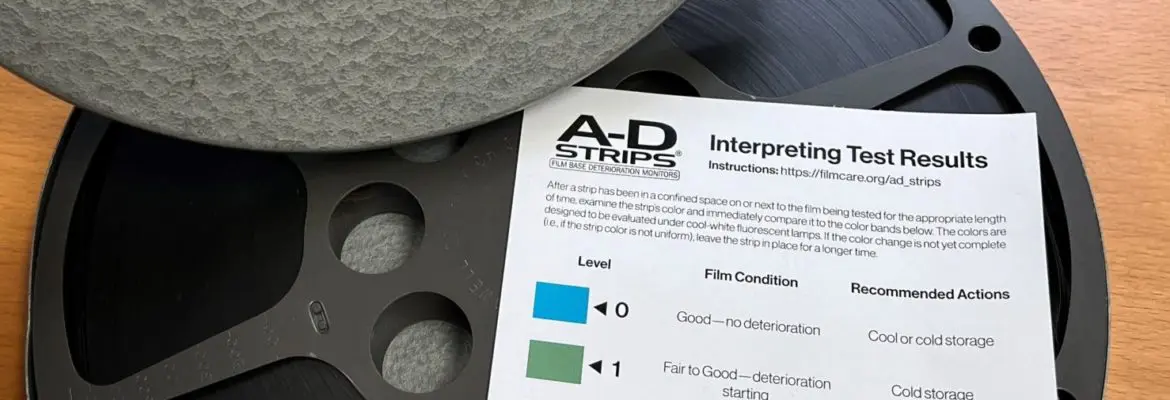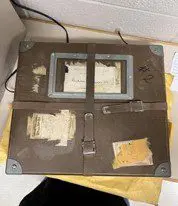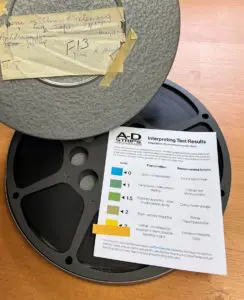
Audiovisual material
Our recent posts have focused on paper conservation, as the majority of records in the Diocesan Archives are paper based. But our collection also includes audiovisual (AV) materials, and these can present a special challenge for preservation and conservation.


With the help of Garnet Lewiski-McQuaid, who is currently interning with Vincent Dion at Conservation + Culture, we have started to review our AV material for preservation and conservation needs. The Diocesan Archives has over 100 audiovisual items in our collection, created by the Diocese and parishes. These materials are in a variety of formats, including 8mm film, 16mm film, ¼” film, 1” film, audio cassettes, Betamax, U-matic, VHS and CD/DVDs. Each media format has unique preservation needs and requires different conservation treatments.

As part of their review of our film holdings, Garnet has been using A-D Strips to assess the deterioration of the film reels. Most of these films show some signs of deterioration, which is expected due to the age and lack of cold storage conditions that are better for audiovisual material. Sometimes it can be obvious, even without an A-D strip, that the media is degrading. For instance, we were aware immediately that we were dealing with fairly significant deterioration of one acetate film in our collection, when we opened the container it was in and a strong vinegar smell filled the air. This is because when acetate deteriorates it can it emits volatile acetic acid (referred to as vinegar syndrome), which will eventually lead to shrinkage, embrittlement, and buckling of the film and degradation of the gelatin emulsion with the image.

This film titled “Tomorrow’s Harvest: Church Extension in the Diocese of Toronto 1957” sounds like it could be an interesting resource, and thankfully we have a second copy in slightly better condition, but the reel affected by vinegar syndrome is unlikely to be viewable again.
While the physical condition of the AV materials is very important, the ability to access them in order to view and/or listen to the recorded information is also an important consideration. Over time the ability to access and view some of these formats becomes difficult as the hardware needed to do so becomes obsolete. This is particularly an issue with formats that require a specific viewing machine that is no longer manufactured, and even VCRs can be difficult to find these days! Unfortunately, without the necessary equipment to view a film or listen to an audio recording it becomes difficult to determine its archival value. The archives department can only guess at its contents based on any labels or donation records that might have accompanied the AV materials when they were transferred to the archives.
To ensure that these deteriorating AV materials are accessible in the future we must consider having these AV materials digitized. This is even more important for some formats where the time left for getting this done may be limited. More recent magnetic tapes, without acetate bases, are more stable than formats that have acetate bases, but the equipment needed to replay them for digitization is obsolete, and spare parts to keep existing equipment running are also difficult to find. The United Nations Educational, Scientific and Cultural Organization (UNESCO) Magnetic Tape Alert Project issued an alert in 2019 that the ability to digitize such media may no longer be available by 2025. The bulk of our audiovisual holdings are magnetic tape, so this is of significant concern to us. We are working on prioritizing material for digitization and hope to find funding to have them digitized before this is no longer an option.